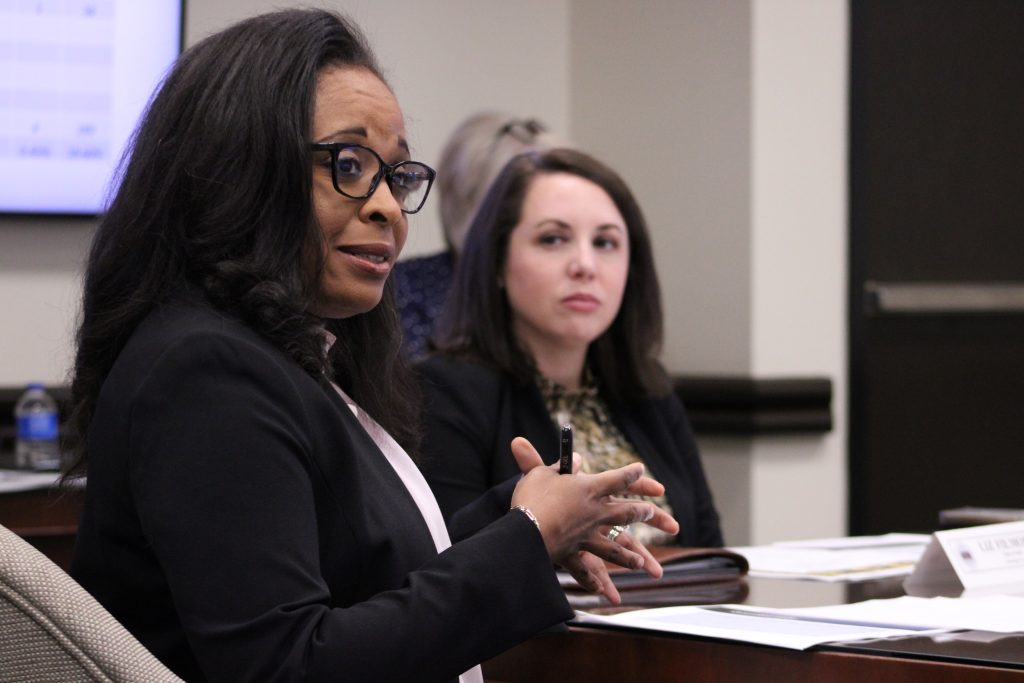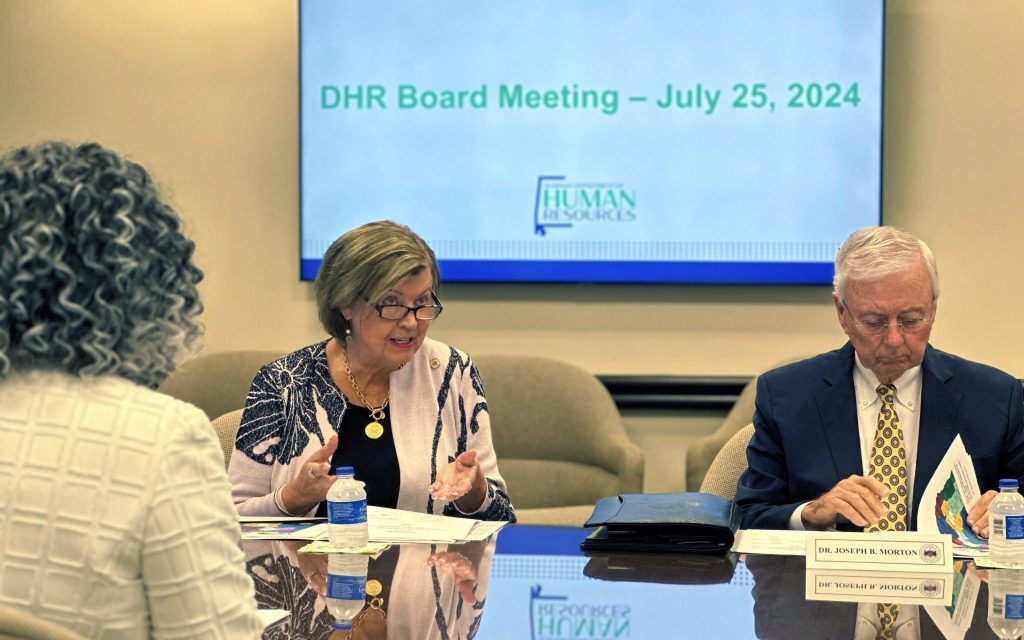MONTGOMERY, Ala. — Leaders at the Alabama Department of Human Resources shared data Thursday during a meeting in Montgomery that painted a picture of significant progress for the state’s child welfare system, which ADHR primarily manages.
The one exception, however, was the growing strain put on DHR from relinquishments, or instances where parents voluntarily give up their child to the state, often as a result of the child’s violent or dangerous behavior.
“What’s happening to the child welfare system in this state is, when parents are scared of their children, the judges are giving them to DHR,” said Nancy Buckner, DHR Commissioner.
“We actually got two children not long ago that had both been arrested for attempted murder; mom’s scared of them, can’t come back to her home. What does the judge do with them? Gives them to DHR.”
According to data shared during the meeting, children up to 9 years old are primarily surrendered to the state for parent drug abuse. Between 10 and 13 years old, however, roughly a quarter of children are surrendered due to relinquishment, between 14 and 16, nearly half, and 17 through 21, almost 60%.
“It is really causing some problems within the child welfare system because it was never set up to deal with those types of children,” Buckner said.
“Although this is not the majority of the children, it takes up so much time, and it’s really starting to affect us on some of our other numbers. It’s a serious issue that the state’s going to have to deal with at some point.”
Those other numbers, however, were overwhelmingly positive.
High school graduations among children in ADHR care were at an all-time high in 2023 at 199, up significantly from the 115 seen in 2015. Additionally, 99 children are currently enrolled in college, and 117 in trade school.
“We’ve come a long way,” Buckner said. “We’ve got the highest number (of high school graduates) we’ve ever had, but we don’t have the highest number of children in foster care that we’ve ever had, so we’re proud of that.”
The five-year average length of time children are in DHR care has also reached 13.1 months, far lower than the national average of 17.5 months. Adoption rates remain high, with 741 recorded in 2023, up substantially from 548 in 2014, or 398 in 2004.
And the overall number of children under DHR care is also down significantly, from 6,405 in 2018 to 5,906 currently.
“Today, we have 5,906 (children in care), and that is a really good thing because we’ve got to keep children safe, but the minute you make them safe, you should be working towards permanency,” Buckner said.
Children coming into the child welfare system that have exhibited violent behaviors, however, remained a matter of concern for the agency.
Alabama is among the states that has extended its foster care system beyond 18 to include youths up to 21.
While the extension has provided additional resources for young Alabamians up to 21 who live in situations that pose an identifiable risk of harm, it has also presented new challenges to Alabama’s foster care system, according to Shea Cobb-England, DHR deputy commissioner for quality.
“Some of the biggest issues that we’re dealing with now are some of the psychosis and sexualized behaviors,” Cobb-England said.
“One of the biggest issues are children coming out of the Department of Youth Services that are registered sex offenders. They’ve completed the programs, but they have nowhere to go, and if they’re going to one of our programs, they’re with our children, so we have nowhere to put them.”

Additionally, other behavioral issues exhibited by some of the older children or young adults within the care of DHR, Cobb-England said, include theft, destruction of property and self harm.
Some of the behaviors are so severe, Cobb-England said, that ADHR did not have the resources to treat them in state.
“In the last three months, we’ve dealt with 14 different children in terms of placement that, I’ll be honest, we haven’t had luck getting them placed, we’ve had to look out of state,” Cobb-England said.
“We’ve actually had an increase with our referrals for out-of-state placement because our providers, they’re just not equipped to deal with children with that level of need. At the same time, when they’re released from DYS, they’re in our care.”
Cobb-England also said that the strain put on Alabama’s foster care system was further exacerbated by continued issues such as understaffing and provider contract compliance.
“You guys have heard me talk a lot about resource management and the ongoing issues with placement providers, but it has not changed,” she said
“We continue to have some of the same issues that providers have; we have staff turnover, we have ongoing training issues with providers, we continue to struggle with mental health issues and delinquency.”
Alabama lawmakers allocated $144.2 million to the ADHR in the 2025 General Fund budget, a 13.2% increase over this year’s allocation of $127.4 million.
With its limited resources, the ADHR regularly partners with other state agencies to manage the nearly 6,000 children and young adults within its care, including the Alabama Department of Mental Health, the Alabama Medicaid Agency and the Alabama Department of Education.











